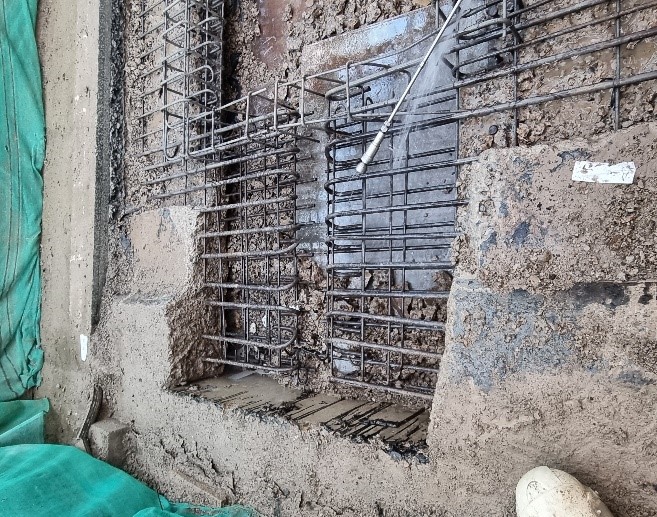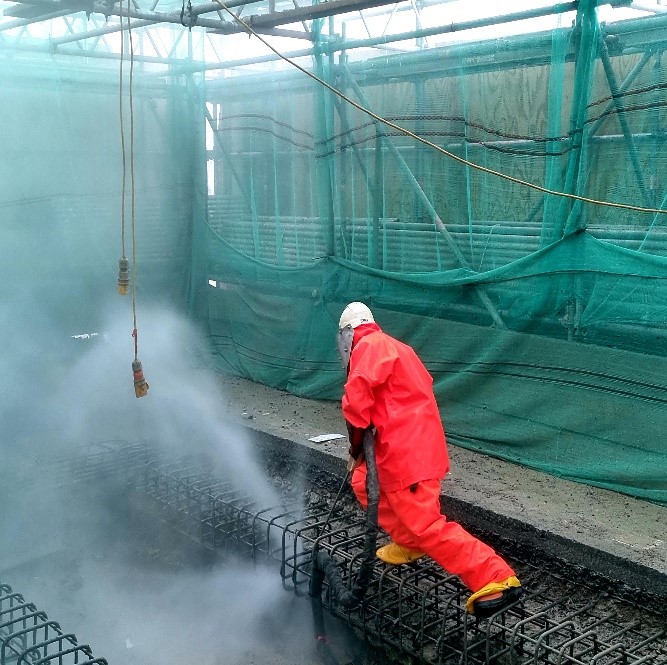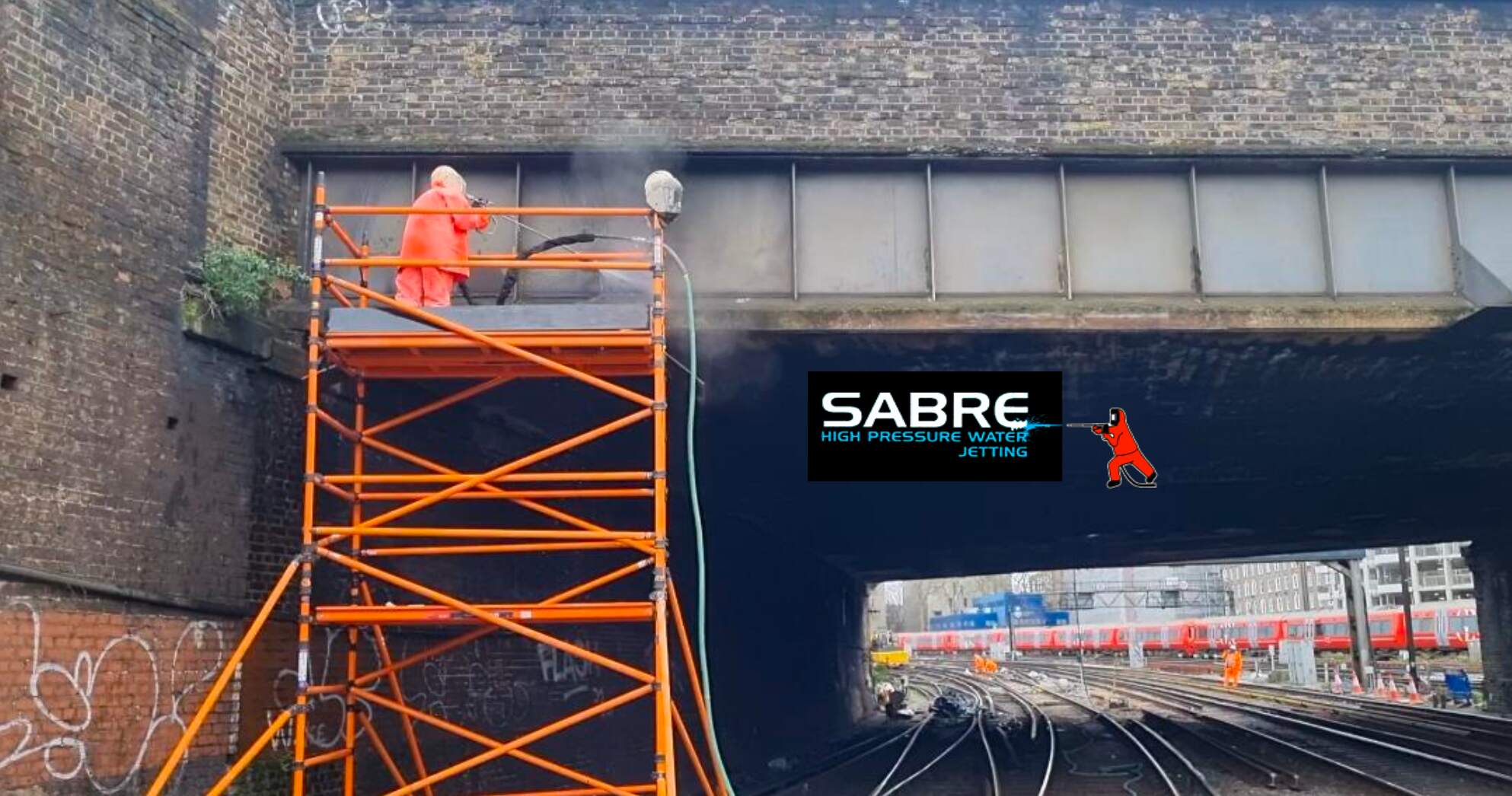A1(M) Barton Interchange Lightwell Replacement

A1(M) Barton Interchange Lightwell Replacement
Hydro demolition to 2no. Lightwell Bases
Location – A1(M) Deck – North and South Bases – 18m³ of concrete
• 2 Jetting Teams
• 1 Bowser Driver
• 2 Tanker based Jetting units
• 1 Van based Jetting unit
South Bridge
10/01/22 – Mobilisation to site including induction
11/01/22 – Setup Jetting units and Water Management
12/01/22 – Hydro demolition started
18/01/22 – Hydro demolition completed to South bridge
North Bridge
19/01/22 – Hydro demolition started
26/01/22 – Hydro demolition completion to North bridge
27/01/22 – De-mobilisation from site
Working – Dayshifts
Site Daily Briefing @ 7am
Site Hours 7am – 6.30pm (Monday-Friday)
Workface accessed from the A1(M) using Traffic Management access/egress from the Northbound and Southbound carriageway
Zach Cogger – Team Leader – Hydro demolition team
“Early morning start for the team to get up to the A1M Barton Interchange. Jetting tankers units, Water Recycle Treatment unit and associated equipment make there way up to the Balfour Beatty compound just off junction 56 of the A1M (Barton Interchange)
On arrival the Sabre Jetting team were introduced to the Balfour Beatty site-based team…6 inductions including Balfour Beatty Zero Harm induction completed.
Initially, the hydro demolition works had been planned to start with one team working to the South Lightwell, whilst the other team working to the North.
Due to incomplete containment to the North Lightwell the jetting team hatched a plan to get setup on the South with the South team, working in sync consecutively.
The area accommodated two teams safely so the WWP (works package plan) was amended to suit the new method of works as agreed by Sabre Jetting and Balfour Beatty.
“We planned a safe method of work so two crews could jet safely in one tent by erecting debris netting in the center of tent to prevent flying debris entering each other work area”
Once all relevant paperwork had been amended, briefed and signed to the team were ready to start on the South Lightwell.
Jetting commenced on the 12th January 2022 with two hydro demolition crews going hard at it to the South Lightwell which was completed by 18th January 2022. The jetting works to the South Lightwell was completed in 7 days and signed off by the client, ahead of schedule, helped by the effort the team put in and the extra hours worked during the first week.
Both jetting teams set up on the North Lightwell on the 19th January 2022 moving all equipment and jetting units over to the North location. We started the hydro demolition to the North Lightwell using the same method as on the South until the North side was completed.
Both jetting crews worked hard and put long hours in to achieve coming in ahead of program which was very satisfying for the client. Once all concrete breakout had been completed and
passed off by Balfour Beatty’s site engineers the client asked if we could clean the steal on the North side.
We achieved the cleaning of the steel reinforcement by using a Rotary Nozzle, the final outcome was good and the client again was very happy.
The whole team worked together well resulting in the job coming in ahead of schedule, this ensured the job ran smoothly and I am very happy with how the team performed”
Water Management
Location – A1(M) Below Deck – North and South Bases – Situated inside Traffic Management under Junction 56 A1(M)
• 1 Water Recycle Technician
• 1 Water Recycle unit
South Bridge
10/01/22 – Mob to site including induction
11/01/22 – Setup Water Management and Treatment Equipment and Water Recycle unit
12/01/22 – Treatment started
18/01/22 – Treatment completed
North Bridge
19/01/22 – Treatment started
26/01/22 – Treatment completed
27/01/22 – De-mob from site
28/01/22 – Collected remaining travel vans
The used hydro demolition water was contained within the temporary works created as a crash deck beneath both Lightwell locations. This allowed the water to run-off directly below to a sealed bund that had been created by Balfour Beatty inside Traffic Management situated within the roundabout of Junction 56. The same methods to bund the hydro water applied for both the North and South location. 2” Submersible pumps were used to transfer the water from bund to treatment plant.
The treatment process started with the transfer of the used hydro water. Our treatment plant is specially designed to withstand the flow of two crews working whilst ensuring the water quality remains to a high standard and can treat a flow of up to 20m3 per hour.
Treatment starts, the water travels through a flow meter to calculate the volume per hour in cubic meters of water, this meter (flow meter) is linked to a dosing pump which records the volume of water passing to determine the amount of polymer dosing required and once linked by calibration means the treatment process will automate throughout the works adjusting both the dosing mg/l rate including maintaining a steady pH correction value.
Once treated, the water is corrected back to pH 7 which actually succeeds the EA’s requirements for discharging water activities that sits between pH 5-10 in some cases.
Sabre Jetting Services ensured the treatment process remained consistent throughout the works and made regular site visits to check all was running smoothly. One visit included check both dosing levels and pH correction, the pH correction never failed once, every check showed a steady rate of correction was being applied throughout each shift and enabled the discharge pH levels to remain within our target value.
One correction to the treatment process that had to be addressed was to do with the polymer dosing. Below lists a report made by our site-based technician upon finding a sample had clouded in transparency which suggested a possibly ‘underdose’ rate of polymer was being applied which allowed suspended solids to carry over to the final filters, which in turn required all final filters to be changed more frequently. He spoke to a technician from Siltbuster UK who helped in the development of our water treatment unit over the years which is PMPU20 based.
Report from Water Treatment Technician at A1M Barton Interchange
1. Arrival – 1st Observation = Water quality dropped off visually inside PMPU20 and discharge samples.
2. I could see the Q-dos pump was under dosing, confirmed after I had ‘Max’ dosed and left to settle and visual made checks. Plates in middle section starting to become visible again which was a sign the dosing part of the treatment was going in the right direction.
3. Spoke to Siltbuster UK – He confirmed likely underdosed (video sent)
4. I was unsure if the flow meter and Q-dos60 pump were linked correctly and/or needed re-calibrating
5. Re-calibrated Q-dos pump link to Flow meter and set the following
• mA High (highest it’ll go)
• Flow rate % (High)
• mA Low (lowest it’ll go)
• Flow rate % (Low)
• Within the “control settings” (speed rpm control set to 26rpm)
• If dose need increasing, higher rpm (52rpm)
• If dose needs decreasing, lower rpm (26rpm)
Final sample taken through a final 1-micron filter – quality becoming clearer and clearer. Samples taken away for TSS testing.
Finally, before pumping ‘Back to tank’ or ‘Recycling’ we had flushed the treated water through a chain of micro filters starting with a 20-micron, 10-micron and then finally a 1-micron filter. The results are impressive!
Inlet water, concrete quality and bund design can all affect the quality outcome when recycling which is why we take regular readings and record pH levels 4 times daily, Including obtaining a water sample for our records which later is sent away for a suspended solid content test.
All records are issued to our Clients at the end of works upon request.
Summary…
Total days on site (including inductions, set up of all plant and equipment at both locations) = 15 days
Tankers of water used = 30
Days we recycled = 6
Tanker trips saved = 12 tanks / 240,000lts / 240m³
WORK WITH US
We are always happy to make new connections,
so if you wish to work with us or simply want more information regarding Hydro Demolition, Surface Preparation and Tank Cleaning








